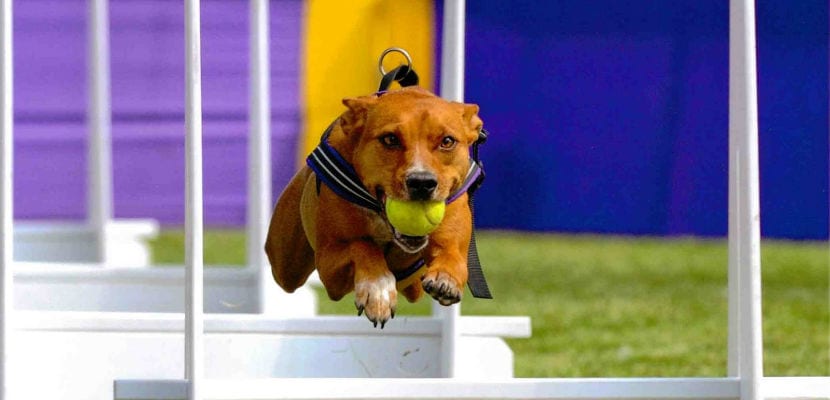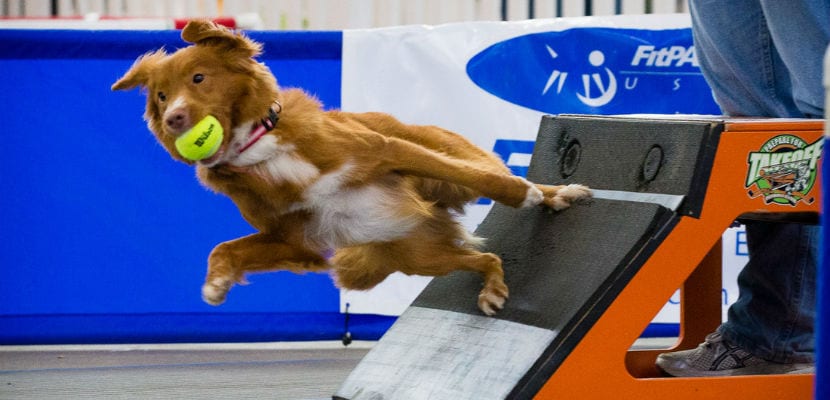
Dogs need physical activity to keep their body and mind balanced. Thus it is recommended that they do some sport, in addition to the daily walks, essential in any case. The flyball, for example, can be a good option, since it brings multiple benefits to these animals.
The origin of the flyball
This dog sport originates from a device called fly ball invented by Australian scientist Herbert Wagner in the 70s. It was an equipment designed to throw balls at dogs, so they could have fun when they were home alone.
When Wagner introduced this project on North American television, excited the public. Little by little his idea was developed until it was applied to this sport, which quickly began to take shape and become popular.
It did not take long for specific rules to be established to regularize this discipline. Thus arose the classification of races, the strategic position of the obstacles and the championships. Actually large-scale national competitions are held, which are even broadcast on television and very well received by the public.

What is?
It is done in two teams of four dogs each. Each animal must perform an obstacle course until reaching the device fly ball, which operates with its legs to throw a tennis ball. The dog catches the ball and runs back to the starting point, where he takes over from the next dog on his team.
The group that reaches the finish line earlier and makes the fewest mistakes wins.. These carry penalties and are given when, for example, the dog drops the ball, ignores an obstacle or goes wrong on the way. The whole process is guided by various coaches and supervised by a jury.
The height of the obstacles varies depending on the size and race of the participating dogs. For this reason, animals are previously classified into different categories. Therefore, obstacles can range from 20 cm to a maximum of 40 cm high. Each of them is separated by a distance of 3,05 meters.
The balls must be small so that the dog can catch them easily, but large enough to rule out the risk of drowning. Ideally, its size should be similar to tennis balls. In addition, they must be made of quality materials that are totally safe for animals, which cannot break or cause intoxication.
We can see an example in this video, recorded during a competition in 2012:
Services
This sport brings important benefits both to dogs and their owners. Some of them are:
- Strengthens the limbs of the animal.
- It helps us to bond with him.
- Increase your concentration.
- Boost your speed and agility.
- Reduce stress
- Increases the self-confidence of the animal.
- Prevents diseases such as obesity and osteoarthritis.
- Help the dog to balance its energy.
- Reinforce basic obedience commands.
- It favors the correct socialization.
And not only that. This sport requires training time, which "Forces" owners to spend long hours with their dog, to learn to understand her and to communicate better with her. In this way, a good state of mind is favored for both and the "dog-human" relationship is improved.
Limits and tips
Today this sport is widely practiced in countries such as the United Kingdom and Canada. However in Spain there are no regulated flyball competitions, but we do find numerous Agility clubs and dog schools that offer us the option of practicing it as a hobby.
Any dog is suitable for this sport, regardless of its breed or size; However, if our dog is elderly or has health problems, we must consult it previously with the veterinarian.
For example, dogs with heart problems should not do this activity high intensity, as it requires enormous effort. Likewise, it is not recommended for those who have osteoarthritis or joint pain, as they can hurt themselves when jumping.